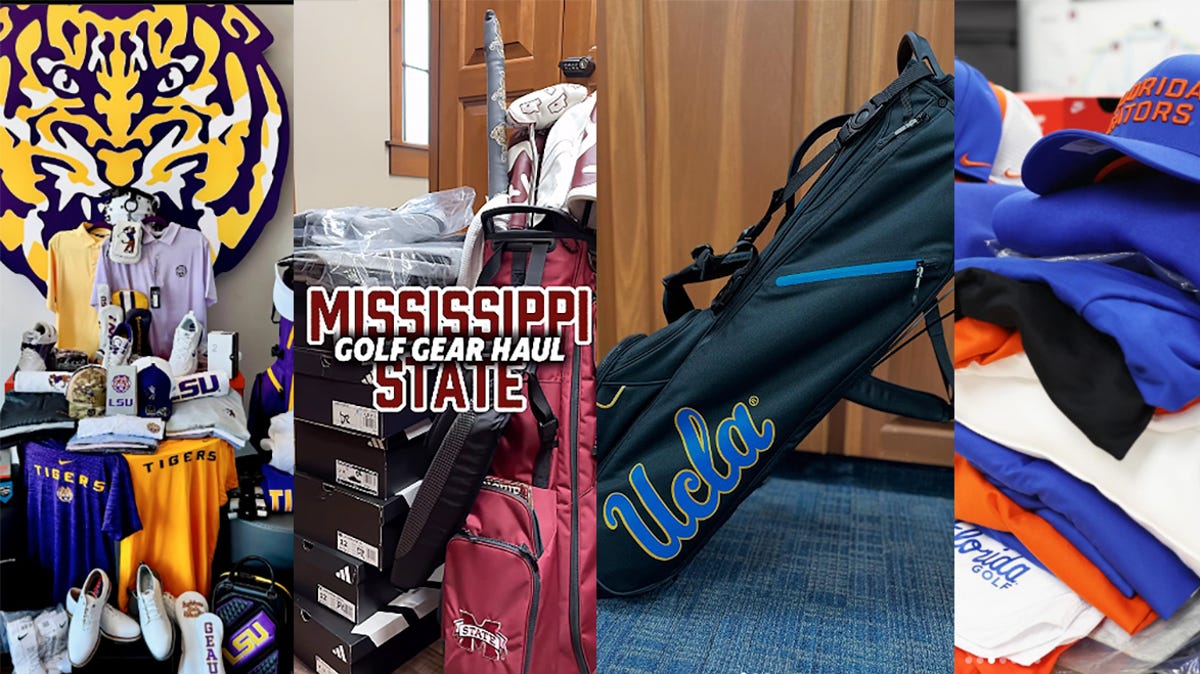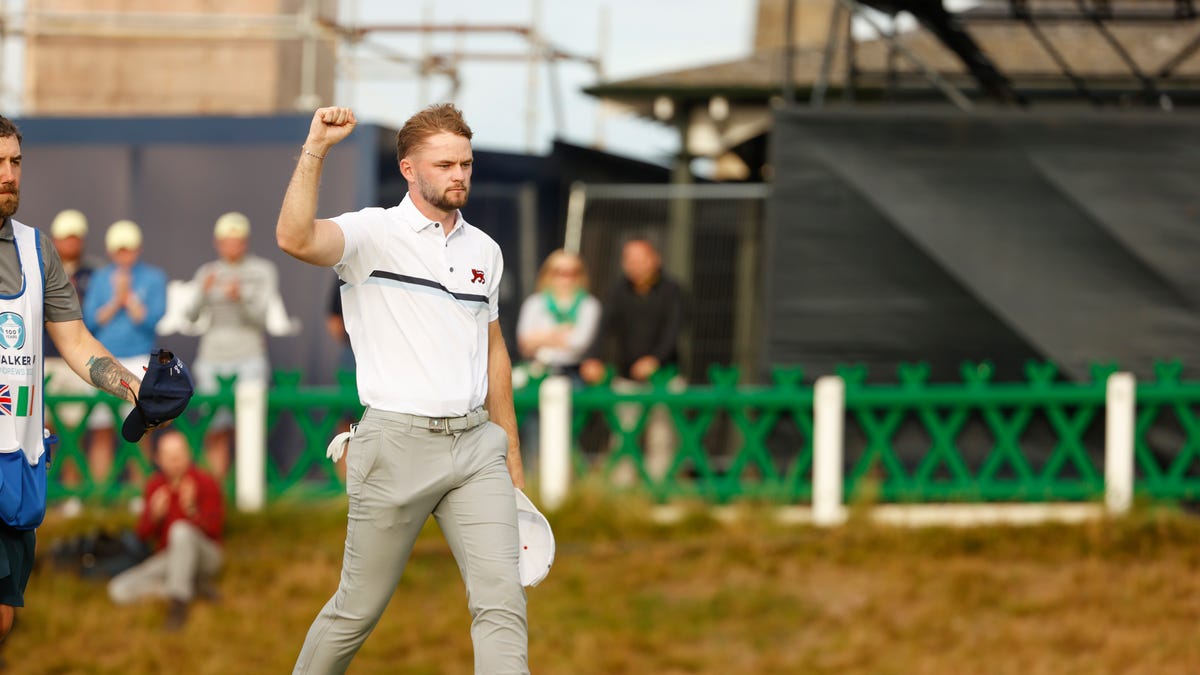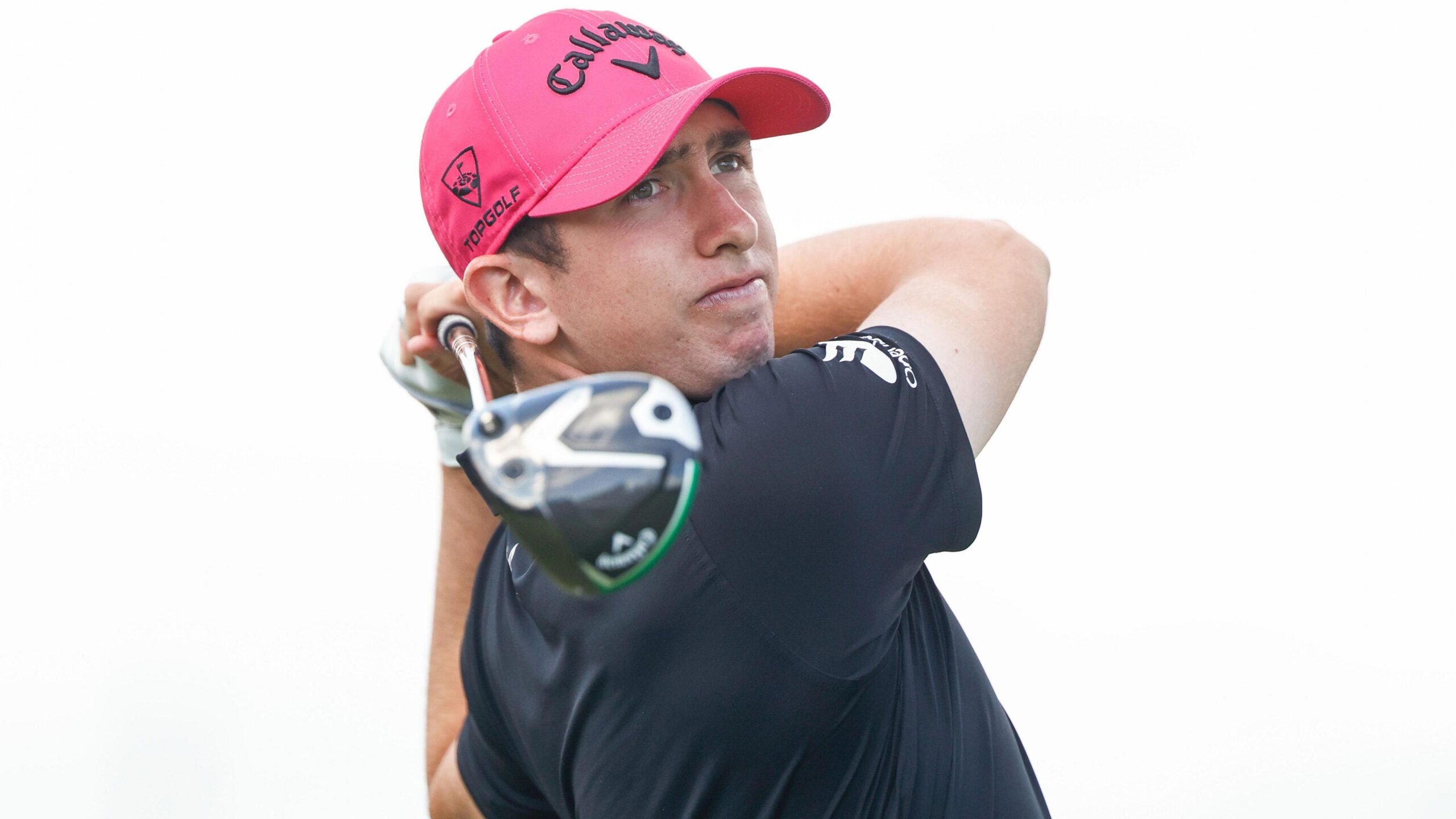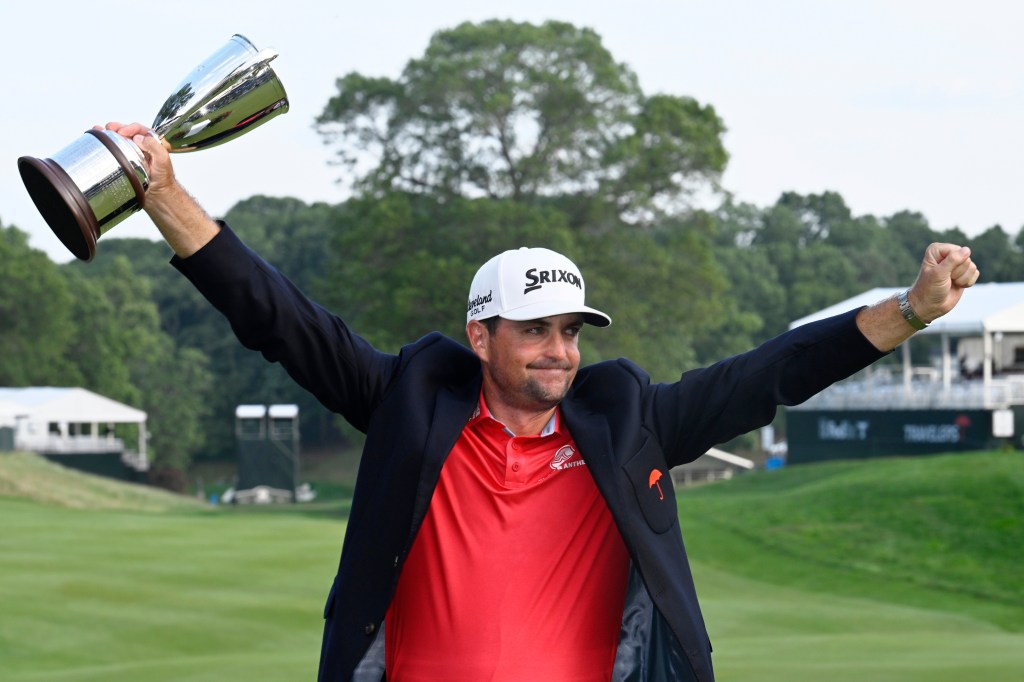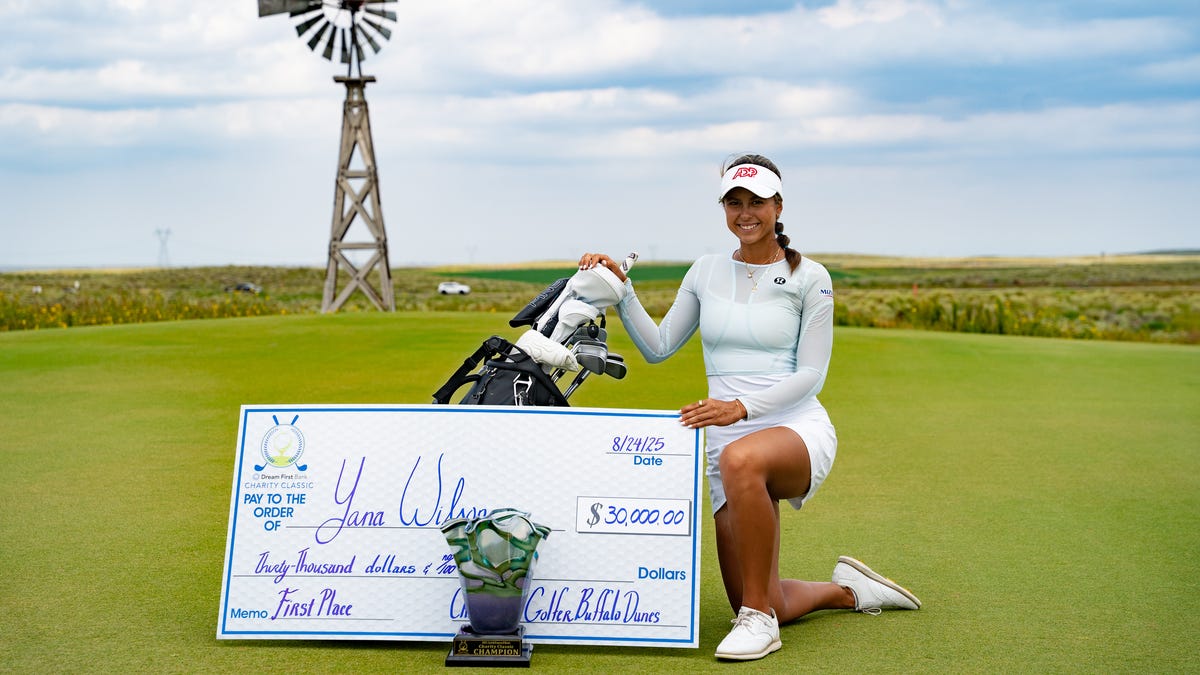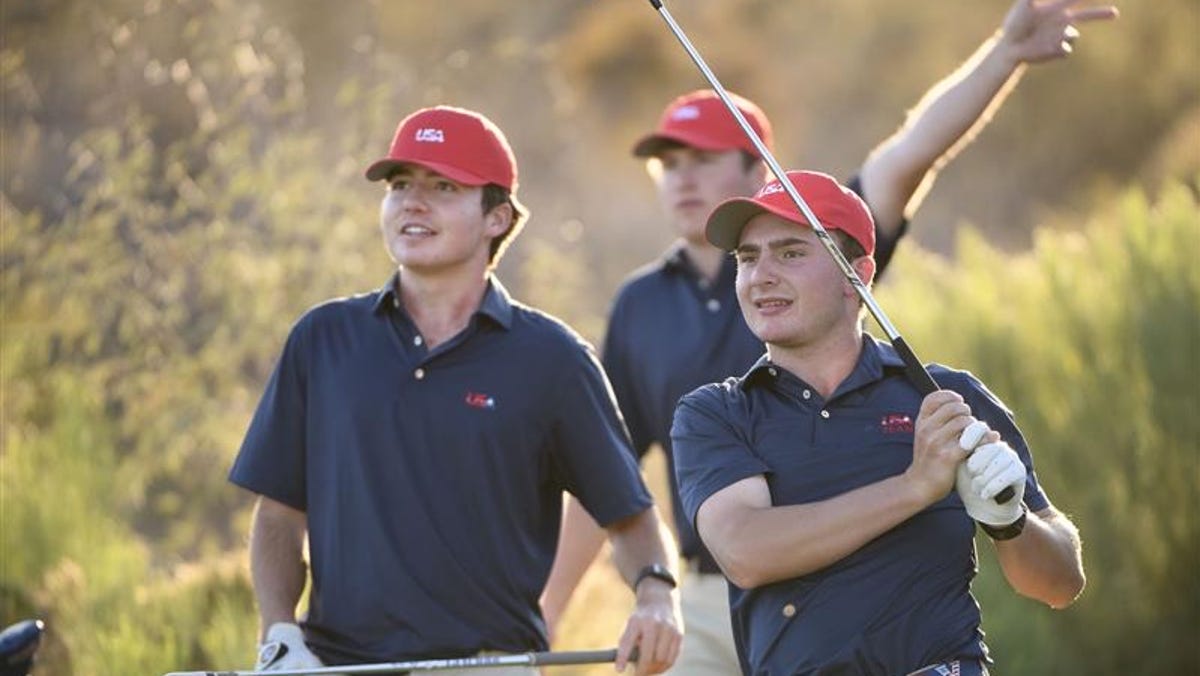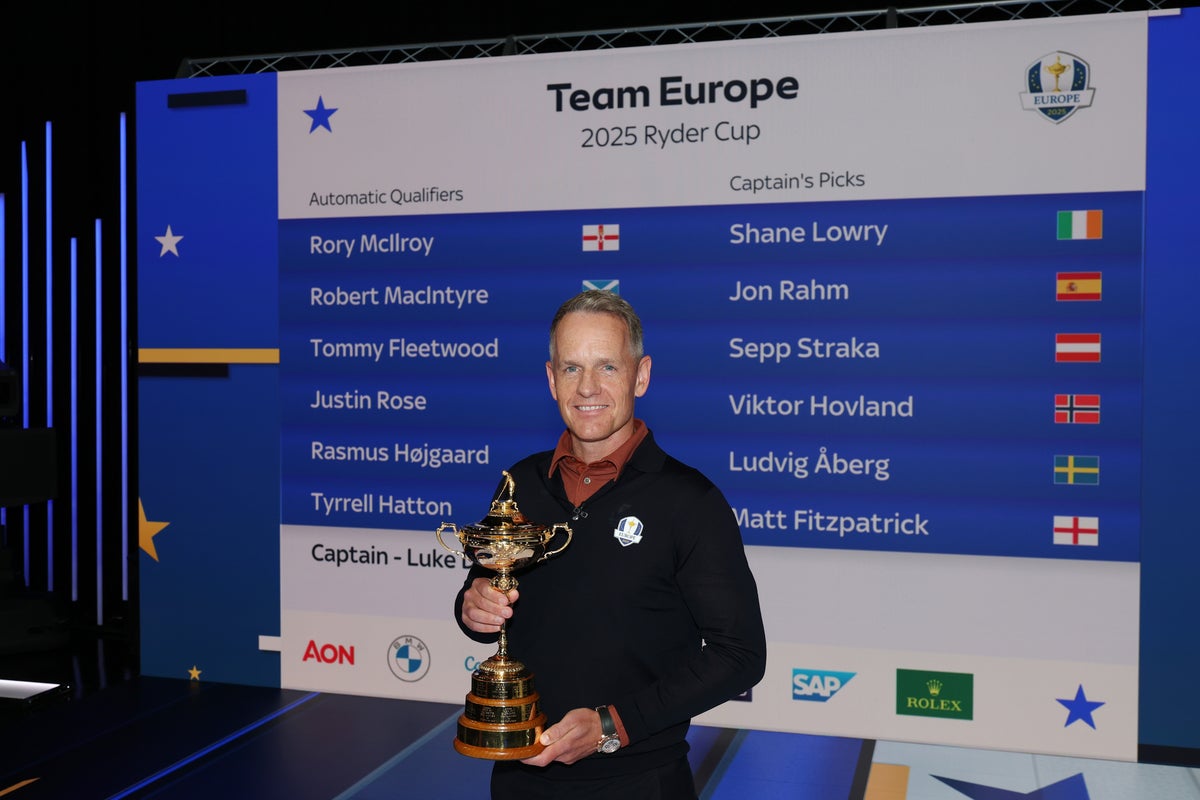College golf teams showcase piles of free gear each fall. Here’s how schools, players and brands benefit from the system.
While college football dominates headlines in late August and September, college golf programs stage one of the most eye-catching rituals of the year on social media. Programs from coast to coast show photos and video clips of players surrounded by piles of new shoes, racks of fresh workout clothes and on-course apparel, customized bags, and accessories such as personalized scorecard holders and hats.
At a time when college athletes can profit from the use of their name, image and likeness (NIL), how does the world of college golf and the business of the sport intertwine? Do players really get all of this for free, and what happens to it once the season ends?
Golfweek contacted brand executives, manufacturers and coaches who live inside the system. They explained how college golf’s gear economy has grown into a unique ecosystem of relationships, sponsorships and recruiting that benefits brands, programs and players alike.
College golf gear day is ‘like Christmas morning’
At Mississippi State, head coach Dusty Smith admits gear day is one of his favorite traditions. Dain Richie, a graduate student from Illinois who plays on the team, took to Instagram to show off this year’s gear.
“It’s like Christmas morning,” he said last week from Spyglass Hill as his Bulldogs took part in the Carmel Cup. “After our first team meeting, the guys go into the locker room and everything’s set up. Bags, shoes, clothes. The freshmen’s eyes are huge. It’s one of the best days of the year.”
As an Adidas school, Mississippi State, which was No. 28 on Golfweek’s preseason ranking, receives a large allotment of apparel and footwear through the athletic department. But as the Bulldogs have become more competitive, support from equipment makers has grown, too. “My first year here, we had to pay for balls and gloves at a discount,” Smith said. “Now Titleist sends them for free.”
Ping also supplies every player with access to clubs. The program receives 12 golf bags annually, along with travel covers and backpacks. “(Ping) does a great job letting us customize the bags with colors and logos,” Smith said. “We even get special postseason bags.”
Louisiana State University is a Nike school, so you will see the seventh-ranked Tigers sporting plenty of swooshes, but the golf team also has a relationship with Titleist and FootJoy. Jake Amos, who had success at East Tennessee State before becoming the head men’s golf coach at LSU last season, echoes Smith’s sentiment but said that when you transition to the biggest schools, things change. As you can see on Instagram, the Bayou Bengals are fully stocked with gear for the upcoming season.
“Everything’s more custom,” he said, including the three bags each player gets along with headcovers, shoe bags, footwear, hats, laser rangefinder holders and workout apparel. “People want me to have their product too, which is nice. I just think it’s a huge part of looking after the player. I tell them, ‘Attention to detail,’ all the time, and so when I’m doing my equipment stuff, we want to give them the nicest things possible for their time here at LSU Golf.”
For both coaches, the appreciation is critical.
“They’re starting to understand we probably do it better than a lot of teams,” Amos said. “And so, they love it, but they know that like they have to look after it and all that kind of stuff to promote it too. And yeah, they know how fortunate they are.”
What’s in it for brands?
Ping works with 89 men’s and women’s college golf teams, but the brand’s college program started in 1976 when it teamed with Oklahoma State coach Mike Holder to outfit the Cowboys. Gary Hart, who had joined the brand two years before as a PGA Tour rep, recognized that fitting elite college players in custom clubs could not only help them perform better, but it could also help Ping down the road.
“The idea was simple,” said Scott Sullivan, Ping’s senior player development manager. “Get product in kids’ hands to help them play better, and in turn, use them to validate the product. At the end of the day, we’re trying to create brand loyalty and future consumers.”
Ideally, for Ping and other brands that work closely with college teams, the players will become professional golfers and stick with the brands they had success with in college and that they have developed relationships with. But even if those golfers opt for another profession, they will be influential in their regional and local golf communities, and that has value for any brand.
Back then, Ping was technically providing golf equipment to the schools, which in turn gave the clubs, bags and other accessories to the players, just as a football program gives a quarterback shoulder pads or a lacrosse player a helmet. But starting in 2002, the USGA allowed college players and amateur golfers to receive equipment directly from manufacturers without compromising their amateur status.
Today, many elite amateur golfers who get recruited by top colleges and universities often have personal relationships with brands, and they arrive on campus with a bag filled with custom-fit gear.
Adidas takes a different path. Rather than working primarily with individual golf programs, the brand sponsors entire athletic departments.
“When there is a golf program at those institutions we sponsor, they are supported with Adidas Golf product,” said Jeff Lienhart, president of Adidas Golf. “Everything we provide is for the use of the athlete to help them perform, so they are able to keep all the product even after the season is done.”
As a global sponsor of the AJGA, the company also connects with juniors who often advance to top college programs. In some instances, Adidas supplements that support with NIL deals for individual golfers, extending relationships beyond collegiate competition.
For Adidas, the long-term value is as much about insights as exposure. “It’s another way that we’re supporting those who are the future of the sport,” Lienhart said. “It provides us with opportunities to gain product insights that can inform what we design for the future.”
The value of social media
College golf gets more exposure on television than it did 15 or 20 years ago, but the growth of social media has put the relationships between schools, golfers and brands front and center.
“Fifteen years ago, no one posted this stuff,” Amos said. “Now, hat companies and belt companies are calling us after we put up a post.”
This year, after LSU posted photos of the piles of gear golfers received when they got back to campus in August, Amos and the program fielded numerous texts and emails from alumni and fans asking how they could get the bags, headcovers and shoes too.
Smith says he’s careful not to overdo it. “I want recruits to know we’re competitive in every way, but I don’t want to come across as bragging,” he said. “Our players need to be thankful. College golf is special, and they need to appreciate what they get.”
As for NIL, while it has provided a way for the most elite players to make money and create their own deals with brands, when they compete for their schools, golfers can’t go their own way.
“Every player’s going to have to wear Adidas when they get here, when they’re representing the university,” Smith said. “So, what they wear during amateur golf in the summer can be completely different.”
Garrett Endicott plays for the Bulldogs and has his own deals with Adidas Golf and Callaway. On his Instagram, you will see plenty of Adidas clothing in photos when he is representing both Mississippi State and himself, but you will only see him wearing a Callaway hat when he is in non-school tournaments and events.
Beyond free stuff
Once players are given all the gear you see on social media posts at the start of the season, it’s theirs to keep. Companies are not looking to get the customized bags back, they don’t want headcovers returned in the spring and the clothes are the players’ to keep. But behind the piles of swag, coaches and brands say the bigger story is relationships.
“We want to support those who are the future of the sport,” Adidas’s Lienhart said.
Sullivan sees it as a cycle of development. “Kids may not all turn pro, but hopefully their experience with Ping was positive enough that when they’re buying clubs later, they choose us again.”
And for Amos and Smith, the gear is one piece of a larger culture. “I try to make everything we do the best it can be — schedule, facilities, gear,” Amos said. “We’re LSU. Why not?”
Smith echoed that sentiment with a caution. “The gear is great,” he said, “but it’s not rainbows and sunshine. It’s hard work. That’s what I want them to appreciate.”

